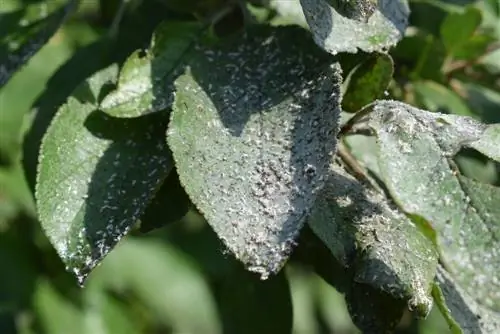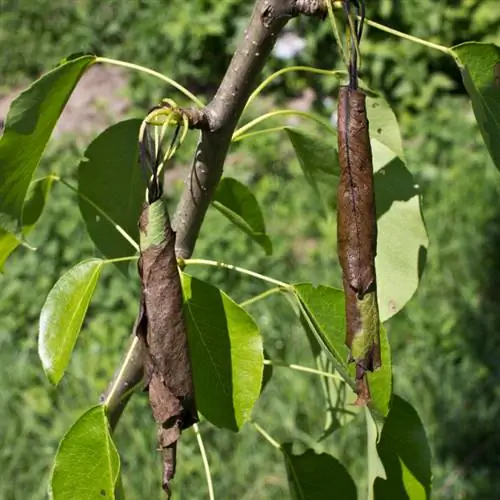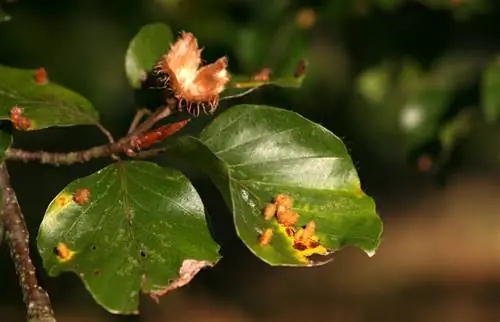- Author admin [email protected].
- Public 2023-12-16 16:46.
- Last modified 2025-06-01 06:02.
We only like its spherical, yellow fruits. Small creatures - known to gardeners as pests - nibble on the entire tree. Which species are common that we discover on the mirabelle plum and, above all, have to combat?

What pests can affect mirabelle plum trees?
Common pests on the mirabelle plum tree are the marsupial gall mite, aphids and the frostbite moth. The marsupial gall mite causes growths on leaves, aphids cause leaves to curl and frostbite caterpillars eat young leaves and shoot tips.
Pouched gall mite
An infestation with the marsupial gall mite can be easily recognized by the damage pattern. The leaves of the mirabelle plum tree are affected. Since the tree spends the winter without leaves, the symptoms only appear in spring:
- greenish growths in spring
- on the undersides and edges of leaves
- they are called galls
- they turn reddish by summer
To a certain extent, the tree owner can deal with the pest inactively and calmly. However, if it appears to be pronounced for several years in a row, urgent treatment is advisable. Appropriate plant protection products based on rapeseed oil are available commercially.
Aphids
Several species of louse are targeting the mirabelle plum tree. Anyone who does not associate this pest with the mirabelle plum tree will probably only become aware of it when the leaves are clearly marked by infestation. They curve or curl up.
An older tree that receives good care and has already developed good resistance usually survives the lice invasion without any serious disadvantages. That's why the garden owner doesn't necessarily have to do anything about it.
But lice are also carriers of diseases, such as the dangerous Sharka disease, for which there is no cure. If you want to minimize this risk, take action against lice. A small infestation can be easily combated with natural enemies, for example the hoverfly. Before you resort to chemicals for severe infestations, spray the tree with ecologically safe nettle decoction.
Frost tensioner
It is not the frost moth itself that harms the mirabelle plum tree, but its offspring. The voracious green caterpillars target young leaves and shoot tips in spring. The feeding sites are numerous and large, so they cannot be overlooked. If the caterpillars are active in large numbers, even damage to the bald head cannot be ruled out.
You can protect the mirabelle plum tree preventatively in the fall, so you don't have to resort to pesticides in the summer. To do this, a ring of glue is attached around the trunk to prevent the flightless female frostbite from climbing up. They cannot reach the treetop to mate. As a result, no caterpillars can hatch.
Tip
Check the glue ring regularly to make sure it is not dried out or dirty. Renew it promptly if necessary.






